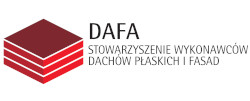Open Access (Artykuł w pliku PDF)
Temperature values inside aluminium profiles of glazed partition walls under standard fire conditions
dr inż. Bartłomiej Sędłak, Instytut Techniki Budowlanej
ORCID: 0000-0002-4715-6438
dr inż. Paweł Sulik, Instytut Techniki Budowlanej
ORCID: 0000-0001-8050-8194
Adres do korespondencji: Ten adres pocztowy jest chroniony przed spamowaniem. Aby go zobaczyć, konieczne jest włączenie w przeglądarce obsługi JavaScript.
DOI: 10.15199/33.2023.12.05
Oryginalny artykuł naukowy
Streszczenie. W artykule przedstawiono i omówiono wyniki pomiarów temperatury wewnątrz profili aluminiowych przeszklonych ścian działowych podczas badań odporności ogniowej. W typowych badaniach odporności ogniowej zwraca się uwagę na to, co dzieje się na nienagrzanej powierzchni próbki, natomiast w artykule przedstawiono wyniki pomiarów przeprowadzonych w jej wnętrzu. W tym celu na przestrzeni lat wykonano 6 badań odporności ogniowej aluminiowych przeszklonych ścian działowych o różnej wysokości (3 – 6 m). Głównym celem badań była weryfikacja wpływu wysokości ściany na jej odporność ogniową, a jednym z badanych parametrów, szeroko omówionym w artykule, temperatura wewnątrz profili słupów.
Słowa kluczowe: bezpieczeństwo pożarowe; odporność ogniowa; wymiana ciepła; badania ogniowe; przeszklone ścianki działowe; profile aluminiowe.
Abstract. This paper presents and discusses the results of temperature measurements inside the profiles of aluminium glazed partition walls during fire resistance tests. In typical fire resistance tests, attention is paid to what happens on the unheated surface of the specimen, whereas this article presents the results of measurements carried out inside the specimen. For this purpose, six fire resistance tests of aluminium glazed partition walls of different heights (from 3 to 6 m) were carried out over the years. The main objective of the tests was to verify the influence of the wall height on its fire resistance, and one of the parameters tested, extensively discussed in this article, was the temperature inside the mullion profiles.
Keywords: fire safety; fire resistance; heat transfer; fire testing; glazed partitions; aluminium profiles.
Literatura
[1] Thomas G. Thermal properties of gypsumplasterboard at high temperatures. FireMater. 2002; 26 (1): 37 – 45.
[2] Roszkowski P, Sulik P, Sędłak B. Fire resistance of timber stud walls. Ann. Warsaw Univ. Life Sci. – SGGWFor.Wood Technol. 2015; 92: 368 – 372.
[3] GhaziWakiliK,Hugi E,Karvonen L, Schnewlin P,Winnefeld F. Thermal behaviour of autoclaved aerated concrete exposed to fire. Cem. Concr. Compos. 2015; 62: 52 – 58.
[4] Narayanan N, Ramamurthy K. Structure and properties of aerated concrete: a review. Cem. Concr. Compos. 2000; 22 (5): 321 – 329.
[5] Nguyen T-D, Meftah F, Chammas R, Mebarki A. The behaviour of masonry walls subjected to fire: Modelling and parametrical studies in the case of hollow burnt-clay bricks,” Fire Saf. J., May 2009; 44 (4): 629 – 641.
[6] Davies JM. Lightweight sandwich construction. John Wiley & Sons, 2008.
[7] Looyeh MRE, Rados K, Bettess P. Thermochemical responses of sandwich panels to fire. Finite Elem. Anal. Des. 2001; 37 (11): 913 – 927.
[8] BorowyA. Fire Resistance Testing of Glazed Building Elements, in Požární Ochrana 2014. 2014; 15 – 17.
[9] Manzello SL, Gann RG, S. Kukuck SR, Prasad KR, Jones WW. An Experimental Determination of a Real Fire Performance of a Non-Load Bearing Glass Wall Assembly. Fire Technol. 2007; 43 (1): 77 – 89.
[10] Sędłak B, Roszkowski P, Sulik P. Fire insulation of aluminum glazed partitions depending on the infill solution of framework profiles. Civ. Environ. Eng. Reports. 2017; 26 (3): 91 – 107.
[11] Sędłak B, Izydorczyk D, Sulik P. Fire Resistance of timber glazed partitions. Ann. Warsaw Univ. Life Sci. – SGGW For. Wood Technol. 2014; 85: 221 – 225.
[12] WuM, ChowWK, Ni X. Characterization and thermal degradation of protective layers in high-rating fire-resistant glass. Fire Mater. 2015; 39 (1): 26 – 40.
[13] Zhan Y, Xia Z, Xin W, L. Hai-lun L.Application and Integrity Evaluation ofMonolithic Fire-resistant Glass. Procedia Eng. 2011; 11: 603 – 607.
[14] Burmistrov I,Vikulova M, Panova L, Yudintseva T. Development of acrylate- based polymeric layers for fireproof laminated glass. 2017; p. 020003.
[15] Laufs W, Luible A. Introduction on use of glass in modern buildings. Rapp. N° ICOM 462, no. January, 2003.
[16] Sędłak B, Sulik, P, Roszkowski P. Fire resistance tests of aluminium glazed partitions with timber insulation inserts. Ann. Warsaw Univ. Life Sci. – SGGWFor.Wood Technol. 2015; 92: 395 – 398.
[17] Wegrzynski W, Sulik P. The philosophy of fire safety engineering in the shaping of civil engineering development. Bull. PolishAcad. Sci. Tech. Sci. 2016; 64 (4): 719 – 730.
[18] Skejić D, Ćurković I, Rukavina MJ. Behaviour of aluminium structures in fire,Areview.Appl. Struct. Fire Eng. 2016, no. October.
Przyjęto do druku: 08.11.2023 r.
Materiały Budowlane 12/2023, strona 20-26 (spis treści >>)




























